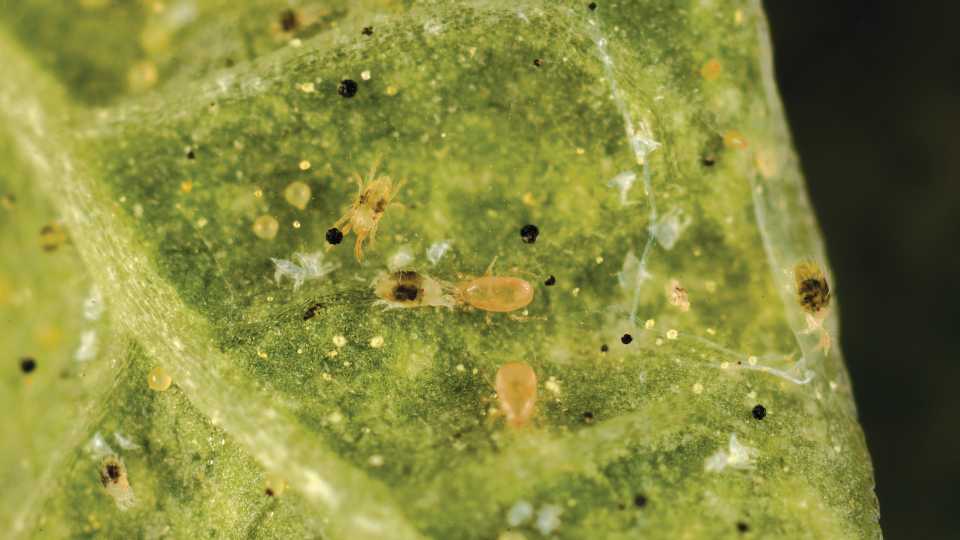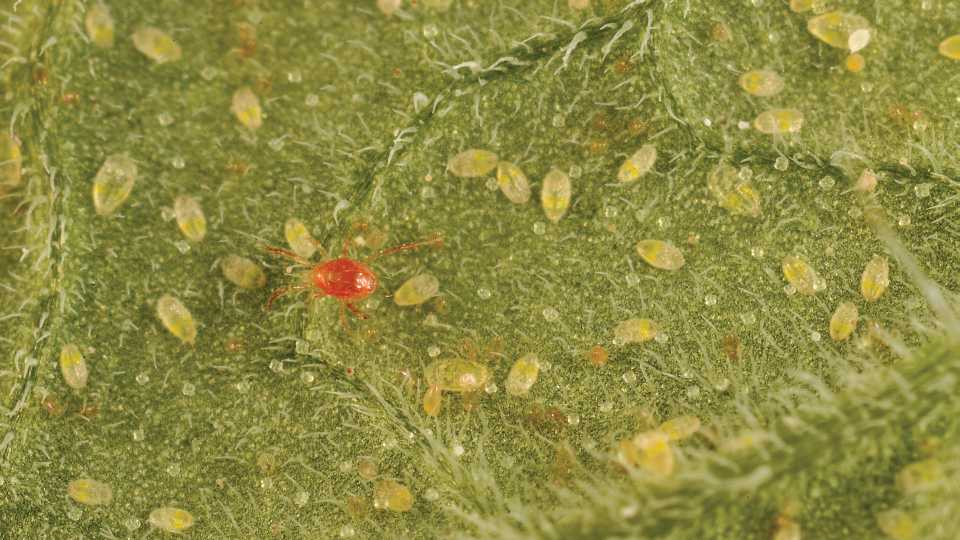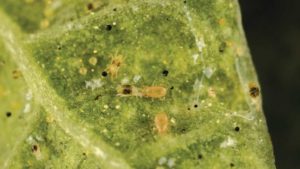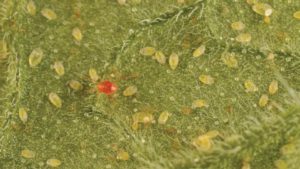Mighty Mites Hard at Work in Florida Strawberries
Florida Grower magazine hosted a tour of farms in Central Florida late last year. One of the stops was at JayMar Produce — a strawberry operation near Plant City. JayMar’s Production Manager, Dwight Rainwater, showed tour attendees how various technologies and products are being deployed on the farm.
One practice was the use of predatory mites in the strawberry fields to help manage two-spotted spider mites. He commented that he was a skeptic at first but now is a big believer in their effectiveness and use in the crop.
Chris Crockett, Director of Research and Grower Services for Highland Precision Ag, works with Rainwater and other growers. The company provides various precision, data management, field scouting, and crop recommendation services. He says a few of his strawberry-growing clients are now using predatory mites. Greenhouse and hothouse growers use them heavily, and Crockett expects the emerging medical cannabis industry will be a big user of the mites. Blueberry growers in the state are beginning to experiment with their use as well. Koppert Biological Systems and Biobest are the major U.S. suppliers of predatory mites.
Just as Effective, If Not More
So, can predatory mites get the job done in strawberry plantings? Crockett says yes, when applied correctly.
“We have found predatory mites in strawberries can be just as effective, if not more effective than some of the traditional spray-only programs,” he says. “We stress these are not a replacement for chemical controls, but it can shift the use-ratio, requiring fewer chemical applications in a season.”
He says to get that level of efficacy, growers should be aware of the correct timing of applications and applying in the right environmental conditions. And, it includes picking the right mite for the job. In Florida, 95% of the time, that mite is the Phytoseiulus persimilis. Other predatory mites, including Neoseiulus californicus are used in certain circumstances.
“We like persimilis because they are so voracious and eat a lot of spider mites,” Crockett says.
Application Tips
Most commercial mite suppliers recommend applications begin when the first signs of spider mites start to appear in the fields.
“When we start seeing three to five spider mites per trifoliate (three strawberry leaflets), we will want to start thinking about getting predatory mites applied in the next week or so,” Crockett says. “We will do an application of about 20,000 mites per acre and observe for a couple of weeks. Then we will likely come in with another application after a couple of weeks. In the height of the season, mite applications generally occur on a biweekly basis.”
Some growers use predatory mites more as a preventative, which Crockett says is advisable if the farm does not have a thorough scouting and field mapping program. Other growers rely on spot treatments in problem areas.
“You might have a grower go in and treat the whole field once or twice per season,” he says. “Then, in between, spot treat areas where we see spider mites pop up. Our scouts flag areas in fields where they see them, then workers come in and apply the predatory mites.”
In those areas, it is often good to spike the rate of predatory mites with up to 40,000 mites in the hot spots. Crockett says they aim to get as many as 10 predators per leaf, or trifoliate, in those spots. Scouts have found as many as 30 on just a few leaves when the predators are thriving.
Environmental and Chemical Concerns
Another critical factor in predatory mite performance is applying them in the right conditions. Temperature and relative humidity play an important role in their survival and ability to reproduce.
“When we think about the conditions we are applying in, we are looking at the microclimate [heat and humidity] within the plant canopy,” Crockett says. “That is more important than the ambient temperature and humidity above the crop, say, at the level of a weather station. Temperature and humidity probes down in the canopy of the plants provide a better picture of conditions.”
Florida is fortunate to have relatively high temperatures and humidity throughout much of the season. This allows the use of persimilis for most of that period of time.
“There could be some points usually in the January/February timeframe where we get drier and colder in the lower 50°F range,” Crockett says. “In that case, we might apply a different species like californicus that is more tolerant to those conditions. Or, we might just hold off applying persimilis until temps and humidity come back up.”
The effect of insecticide applications on predatory mites should also be taken into account. Crockett says he uses a mortality scale to determine potential harm caused to predatory mites by different chemicals. The scale runs from one to four. A product ranked one on the scale is least lethal and four is most lethal.
“For a grower like Dwight, he will not apply an insecticide that is a four on the scale unless he absolutely has to because some other pest is taking down the farm,” Crockett says. “We also consider the predatory mites’ susceptibility to different chemicals. For example, californicus is a little more tolerant than persimilis to certain pesticides.”


















